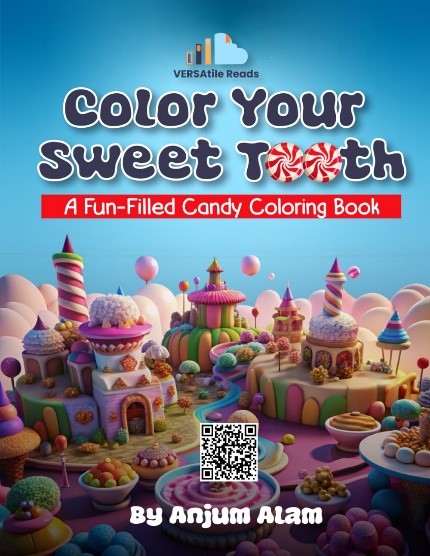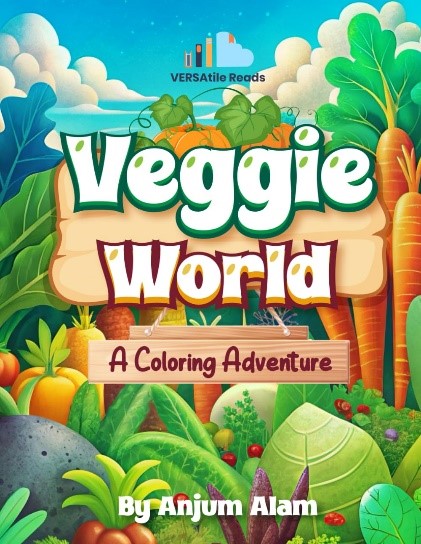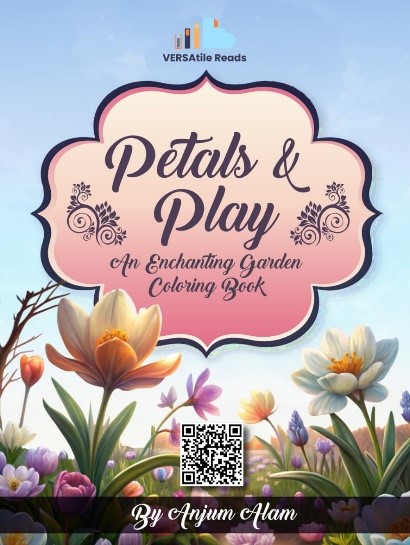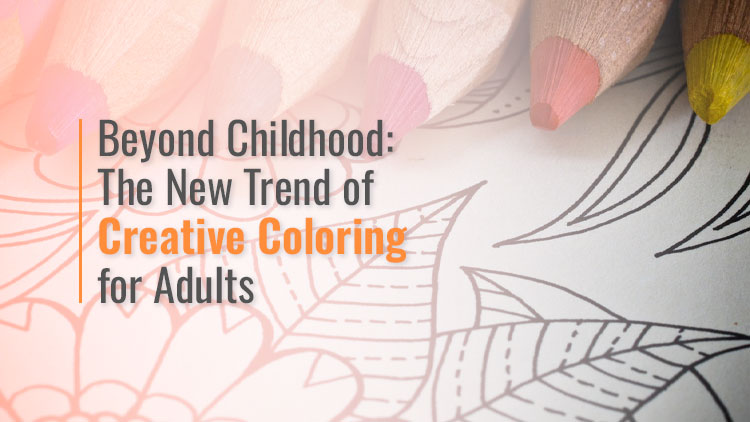
The Sweet Science of Stress Relief Through Coloring
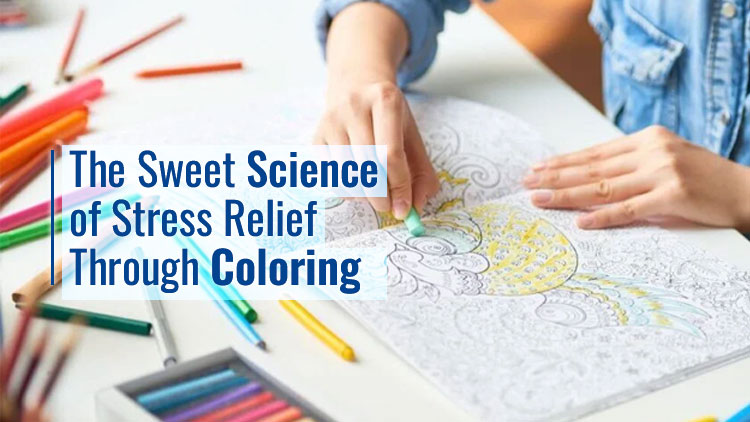
Introduction
After a long, difficult day, imagine sitting calmly with a set of colored pencils and a blank page waiting to be filled. The buzz of frequent messages and never-ending to-do lists disappears as each stroke of color provides a sense of tranquility. Many people feel that stress relief needs expensive therapy or long vacations, but calm may be found in the most modest of acts. Coloring, usually considered a kid’s pleasure, has resurfaced as a creative outlet for people of all ages. Immersing yourself in patterns and colors relaxes the mind, allowing worries to fade and mindfulness to grow. Tension melts away in this peaceful movement of color and attention.
Start your relaxation journey today with VERSAtile Reads‘ inspiring range of coloring books.
The Science of Calm Through Coloring
The fast pace of daily life frequently leaves people feeling mentally exhausted and emotionally tense. With professional responsibilities, family commitments, and constant distractions, the mind rarely has time to rest. Coloring is a simple but effective way to regain focus and relieve stress. According to research from the American Psychological Association, coloring can induce a meditative state that helps reduce stress and anxiety.
This soothing effect occurs when various areas of the brain, including those associated with focus, coordination, and creativity, become actively engaged. Concentrating on colors and patterns reduces mental congestion, resulting in a state of calm similar to meditation.
After a long day filled with deadlines, notifications, and noise, unwinding with VERSAtile Reads’ Satisfying Strokes: Relax & Unwind Coloring Book can feel like reclaiming a quiet moment for oneself. Each stroke of color slows racing thoughts, allowing the mind to reset and reconnect with tranquility. According to studies, this focus helps regulate the amygdala, the brain region that controls the body’s stress response. Coloring allows the mind to rest and relax by focusing its attention on the present moment.
Exploring the Brain-Coloring Connection
The human brain thrives when engaged in activities that induce a state of flow, a mental state in which focus deepens, creativity increases, and the sense of time vanishes. Coloring naturally promotes this mood because it combines concentrated attention with artistic expression, gently shifting the mind away from daily stresses and into quiet participation.
During coloring, the brain enters what neuroscientists refer to as the alpha state, a state of relaxed alertness commonly associated with meditation. According to research, this technique stimulates the prefrontal cortex, which is responsible for logical thinking and decision-making, while also calming the brain’s emotional reaction. As a result, coloring promotes mindfulness, clarity, and emotional equilibrium.
The Healing Art of Coloring
Through art therapy, creative expression has long been acknowledged as a beneficial means of promoting mental and emotional health. Coloring books provide a straightforward and approachable substitute for traditional art therapy, which frequently entails professional guidance sessions. Without the burden of producing original artwork, they enable people to express their feelings, experiment with their creativity, and showcase their distinct viewpoints.
How Coloring Supports Emotional Well-Being
1. Creative Outlet for Emotional Expression
Coloring books provide a gentle and structured outlet for emotional expression, creating a secure space for people who struggle to express themselves openly. For those dealing with emotional trauma or distress, choosing colors, blending shades, and filling intricate patterns can be a quiet but effective way to relieve inner tension. This creative process helps to convert silent feelings into visual form, promoting both alleviation and self-awareness.
2. Activating the Brain’s Reward System
Coloring also activates the brain’s reward system, which causes the production of dopamine, a neurotransmitter linked to pleasure and motivation. This natural mood boost promotes relaxation and emotional equilibrium, which can be especially beneficial for people dealing with chronic stress or psychological pressure.
3. A Simple Path to Healing and Relaxation
Although coloring is not a substitute for professional treatment, many people find it to be a meaningful and healing activity. It provides an accessible way to relaxation and creativity, allowing for moments of tranquility without the framework or pressure of formal therapy. Our Stress-Free Coloring: Big, Bold & Easy Designs for All Ages offers this relaxing experience, with each page inviting quiet and awareness via engaging, expressive patterns that relieve tension and boost the soul.
Coloring is becoming acknowledged as having mental and physical advantages comparable to meditation and yoga, promoting pleasant brain responses that improve general well-being.
The Multifaceted Therapeutic Value of Coloring
1. Coloring and Cognitive Wellness
Activities centered around creative art are becoming more widely acknowledged as successful, non-medical means of enhancing mental and cognitive health. As a visual expression, coloring has shown promise in improving emotional stability, memory, and focus, especially in older adults and those going through cognitive decline. Since conventional medical therapies for these disorders frequently have drawbacks, artistic endeavors like coloring provide a stimulating and healing substitute that promotes mental agility, emotional equilibrium, and sensory awareness while promoting healthy brain function in people of all ages.
2. Promoting Restful Sleep Through Coloring
Coloring before bed can greatly improve the quality of your sleep by reducing stress and calming racing thoughts. Focusing on soft, rhythmic coloring helps the mind separate from everyday concerns and move toward restfulness. Stress frequently contributes to insomnia.
Coloring naturally lowers heart rate and promotes the relaxation response since it requires constant concentration and repeated action. Coloring promotes a peaceful, screen-free transition into deeper, more restorative sleep, in contrast to screen-based activities that release blue light and interfere with melatonin levels.
The Psychological Impact of Color Selection
The colors used for coloring can have a major impact on emotions and mental balance. Color psychology investigates how different hues influence mood and behavior. Each shade has its own emotional resonance, capable of reflecting and molding how one feels. For example:
- Blue and Green: These colors are often linked with peace and harmony, promoting relaxation and helping ease tension.
- Yellow and Orange: These hues are associated with warmth and optimism; they can inspire cheerfulness and enhance energy levels.
- Red and Purple: These vivid colors inspire passion and creativity, stimulating both thought and emotion.
According to studies, people tend to gravitate toward colors that correspond to their emotional condition or needs. Observing these inclinations can provide subtle clues into one’s inner emotions and mental health.
Dive into VERSAtile Reads’ World of Artistic Expression
VERSAtile Reads has a bright selection of coloring books to fit every mood and interest. From the playful sweetness of Color Your Sweet Tooth: A Fun-Filled Candy Coloring Book to the lush creativity of Veggie World – A Coloring Adventure and Fruit Fiesta: Colorful Creations for Fruit Lovers!, each title transforms relaxation into an engaging artistic escape. Whether you’re immersed in Frosty Delights: A Winter Coloring Adventure or seeking tranquility in Petals & Play: An Enchanting Garden Coloring Book, these collections encourage colorists of all ages to relax, express themselves, and create freely.
Together, these collections encapsulate the spirit of mindful creation by demonstrating how coloring promotes calm, focus, and emotional balance in daily life.
Conclusion
Coloring is a powerful kind of mindful relaxation that helps people reconnect with their peace, creativity, and inner balance. Its basic yet engaging nature decreases stress, improves focus, and promotes emotional well-being. In today’s stressful environment, practicing coloring daily can help you create tranquility, self-awareness, and a restored sense of mental clarity.
FAQs
1. How does coloring help reduce stress?
Coloring encourages mindfulness by directing focus to simple, repetitive actions, which quiets racing thoughts and lowers stress levels. This calm, meditative engagement helps regulate emotions and promotes a sense of relaxation.
2. Can coloring improve mental health?
Yes. Studies show that coloring can ease symptoms of anxiety, enhance mood, and promote emotional stability by activating areas of the brain related to creativity and focus.
3. Can coloring before bed improve sleep?
Yes. Coloring before bedtime helps calm the mind, lower heart rate, and prepare the body for rest, making it a healthier alternative to screen-based activities that can disrupt sleep patterns.
- Published Date:


